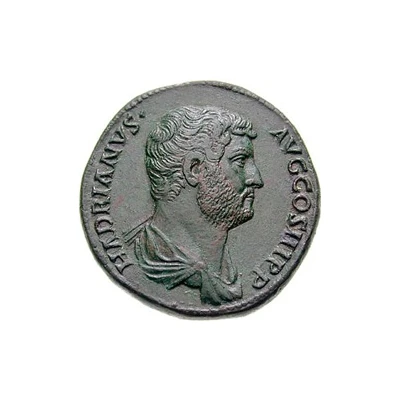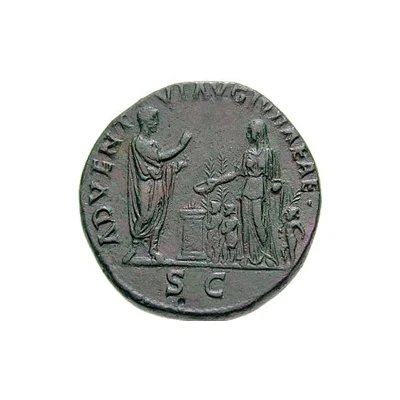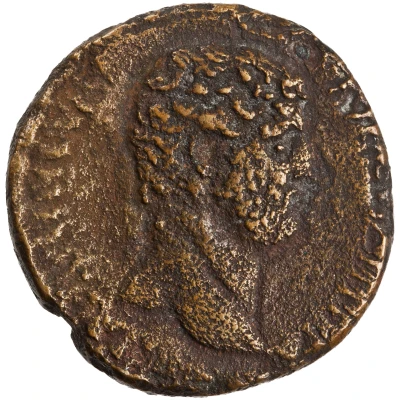Sestertius - Hadrian IVDAEA S C; Judea
| Orichalcum | 25 g | 32.5 mm |
| Issuer | Rome › Roman Empire (27 BC - 395 AD) |
|---|---|
| Emperor | Hadrian (Publius Aelius Hadrianus) (117-138) |
| Type | Standard circulation coin |
| Years | 130-133 |
| Value | 1 Sestertius = ¼ Denarius |
| Currency | Denarius, Reform of Augustus (27 BC – AD 215) |
| Composition | Orichalcum |
| Weight | 25 g |
| Diameter | 32.5 mm |
| Shape | Round (irregular) |
| Technique | Hammered |
| Demonetized | Yes |
| Updated | 2024-10-06 |
| Numista | N#256257 |
|---|---|
| Rarity index | 100% |
Reverse
Hadrian standing right, raising hand and holding scroll; facing him, Judaea standing left, holding patera and incense box; between them, altar, usually with bull at the base; at Judaea's feet, three children, holding palms.
Script: Latin
Lettering:
IVDAEA
S C
Translation:
Iudaea. Senatus Consultum.
Judea. Decree of the senate.
Comment
Source: Online Coins of the Roman Empire (OCRE)Interesting fact
The Sestertius coin , which was issued during the reign of Emperor Hadrian (130-133 AD), features an image of the Roman goddess IVDAEA (also known as Iudaea) on the reverse side. This is notable because it suggests that the coin was minted specifically for circulation in the Roman province of Judea, which was a significant center of Jewish culture and religion at the time. The inclusion of this image on the coin may have been intended to promote the Roman occupation of Judea and to emphasize the dominance of Roman culture over the local population.



